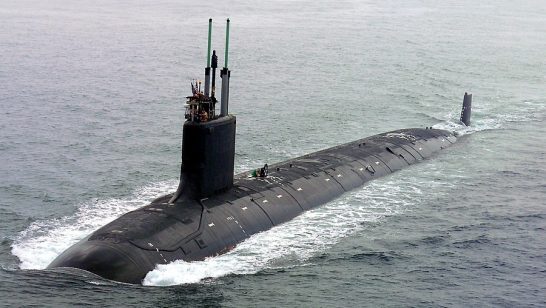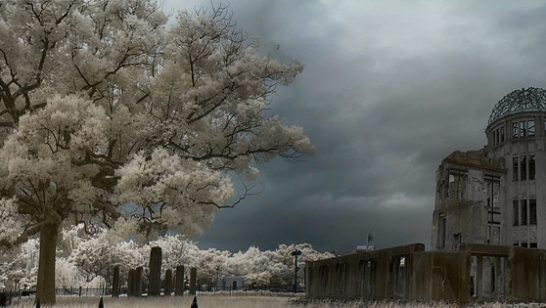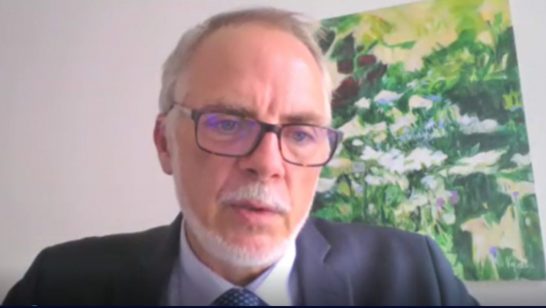
The Non-Proliferation Treaty (NPT) has long been an arena for tension and debate on deterrence, non-proliferation and nuclear disarmament. Throughout its 50-year history, disarmament has typically been side-lined while nuclear-weapon states have pressed for greater restrictions to prevent proliferation.
The NPT has been in a crisis for a long time, protected as the only treaty regulating non-proliferation and the nuclear order. Today this is challenged by a competing treaty, the Treaty on the Prohibition of Nuclear Weapons (TPNW). Following its entry into force in January 2021, frustrations are now open, with nuclear-weapon possessors aggressively opposing it, some even advocating for ratification withdrawal. But there are also deeper, more hidden threats to the NPT´s survival.
In my book “Renegotiating the Nuclear Order”, I argue, based on three factors –a shaky foundation, distorted balance, and proliferation models– that the NPT requires modernisation to adapt to today’s challenges. As it cannot be reformed, as each of the five nuclear-weapon states having a veto right, it must be renegotiated.
A Withering Foundation
According to the “grand bargain” understanding, nuclear-weapon states committed to nuclear disarmament and non-nuclear-weapon states, in turn, to not acquire nuclear weapons. Abstinence was traded for disarmament. Some fifty years later, historical documents on the initial negotiations have now been released,resetting thisunderstanding. According to Roland Popp, the description of the NPT as a “bargain” emerged only in the sales pitch after its agreement in 1968. US officials delivered several public speeches to get non-nuclear states to sign the treaty “by pretending ex post facto that the non-nuclear states had played a dominant part through the actual negotiation of this treaty”.
Moreover, the three pillars, non-proliferation, disarmament and peaceful uses, often seen as holding up the NPT, are also on rocky ground. Christopher Ford, former US Assistant Secretary on International Security and Non-proliferation, recently declared that the “three pillars” were in no way intrinsic to the treaty or part of its original understanding. According to Ford, in 1984, the US proposed that the 1985 Review Conference be subdivided into three committees: non-proliferation and safeguards, peaceful uses, and disarmament. At the Review Conference ten years later, these were first referred to as the “three pillars” of the NPT. Ford underlines that this phrasing did not represent a doctrinal conclusion about the security architecture of the NPT.
The three-pillar understanding “has helped lead subsequent generations to forget important truths they need to remember if the non-proliferation regime is to thrive or even to survive.” One misleading truth, according to Ford, is non-nuclear states’ understanding that the three pillars are equal. The nuclear weapon states, in turn, believe that non-proliferation is the ultimate goal of the treaty. The two other pillars are “no pillars at all” but, instead, are subordinate clauses to the non-proliferation pillar.
A Distorted Balance
In 1965 a UN resolution defined goals for the NPT to require, among other things, “an acceptable balance of mutual responsibilities and obligations for the nuclear and non-nuclear powers.” This balance included a temporary right for five states to maintain nuclear weapons, balanced by the “inalienable” right of non-nuclear states to explore peaceful uses, with the exception of nuclear explosions.
In the 50 years since the NPTs entry into force, nuclear-weapon states have transformed their temporary right into a permanent one. In early negotiations, non-nuclear states accepted the so-called “Gromyko umbrella”, believing that if “nuclear super-powers retain[ed] a certain, although strictly reduced, nuclear deterrent force throughout the disarmament process. […] their mutual security would be safeguarded, which in turn [would] make them more ready to embark on a course of disarmament.” [i]
In the same period, the “inalienable” rights of non-nuclear states grew more and more limited. Restrictions now prohibit both uranium enrichment and plutonium reprocessing, and autonomous control of fuel cycles are not accepted by all, serving as a constant conflict feature in non-proliferation negotiations. Control functions, while no doubt providing security benefits for the world, have gradually increased for abstaining states. At the same time, there is no obligatory control of nuclear states’ military or civilian use of nuclear technology. Even the right to withdraw from the NPT is being debated and seen as a “loophole”.
In sum, while restrictions may be motivated by the reduction of nuclear risk, these have targeted non-nuclear-weapon states only. At the same time, nuclear-weapon states have transformed their temporary right to a permanent one while disregarding their commitment to disarm.
A Comprehensive Approach?
Horizontal proliferation was the theme of the 60s: New states should not acquire nuclear weapons. The main threat today is related to vertical proliferation: proliferation by nuclear-weapon states. Such proliferation takes place under the euphemism of “modernisation”, covering a number of activities ranging from the maintenance of existing arsenals to developing completely new nuclear weapon systems. There are no restrictions on vertical nuclear proliferation. Nuclear weapons states (and even the four states outside the NPT) are free to do what they like as their military facilities are outside any control activities but their own. Horizontal proliferation, by contrast, is managed by a number of restrictions, such as uranium enrichment and plutonium reprocessing.
While details of modernisation activities are not necessarily known, there are cost estimates that imply huge investments in the coming years. The best-known assessment comes from the US, where the 30-year cost of the programs under the nuclear modernisation umbrella – including new nuclear-capable bombers, land-based nuclear missiles, and nuclear submarines – has been estimated at $1.2 to $1.7 trillion. This exorbitant sum represents only the costs of the US programs. Significantly, as both China and Russia are expected to follow the US, we have in front of us a new arms race.
A non-proliferation treaty worth the name cannot ignore vertical proliferation, which currently is the arena for an arms race. Nor can it ignore in the coming years the risks of proliferation by non-state actors. A comprehensive non-proliferation treaty should include three pillars: horizontal proliferation, vertical proliferation, and proliferation by non-state actors. Tarja Cronberg
Conclusion
Non-proliferation is the raison d´etre of the NPT. Demanding progress on disarmament has already moved outside the NPT-frame as the TPNW has entered into force. Furthermore, seeking abstinence at the same time as enabling deterrence creates inequality at the heart of the NPT. The challenge is to separate non-proliferation and disarmament and the respective treaties. A constructive separation, where a renegotiated NPT integrates current threats to non-proliferation, is an alternative approach to better managing the nuclear order.
[i] Myrdal, Alva (1965) Statement by the Swedish Representative Myrdal, in: United States Arms Control and Disarmament Agency (1968) Documents on Disarmament 197, Publication 46, July. pp. 424-425.
The opinions articulated above represent the views of the author(s) and do not necessarily reflect the position of the European Leadership Network or any of its members. The ELN’s aim is to encourage debates that will help develop Europe’s capacity to address the pressing foreign, defence, and security policy challenges of our time.
Image: Wikimedia Commons, Firestorm cloud over Hiroshima



